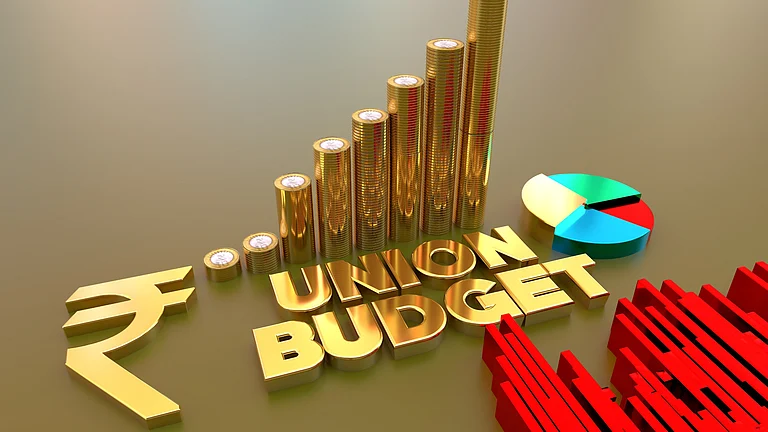If there is one thing difficult to gauge about the year 2020 panning out, it is getting a 20/20 vision about the state of Indian economy. The term 20/20 really means a normal vision or a perfect vision. However, when it comes to Indian economy, the outlook looks hazy because there are die-hard optimists who see the GDP (Gross Domestic Product) at 4.5 per cent for the second quarter of the financial year 2019-20 as bottoming out, in other words, it cannot be worse than this. Then, there are naysayers who have given up hope for the next few quarters, which means most of 2020. The real story may be somewhere in the middle of these two extremes and that is: Indian economy is in a difficult situation and requires a lot of repair work, which willy-nilly is underway, with bravado of those in-charge being replaced, thankfully by some grounded approach.
Let's not confuse ourselves whether the problem is 'structural' or 'cyclical'. Chief Economic Adviser Krishnamurthy Subramanian says the economic slowdown is more of cyclical in nature since India's demographic profile remains young. But when Finance Minister Nirmala Sitharaman attributed the demand dampening phenomenon to the changing tastes and preferences of millennials, her bias was clearly on the structural side of the problem.
The best thing would be instead of debating whether the problem is cyclical or structural, it is better to accept there is a serious issue or rather issues to be tackled and it may take the entire of 2020, because the problem is not uni-polar in nature. There are several of them, each one aggravating the others, taking a big toll on the confidence of consumer or rather household. In turn, it has shaken the business confidence while investment seems a far cry for two reasons - there is an overhang of heavy debt on corporate India and the households are not better placed either. The manufacturing which has contracted by one per cent in Q2 of FY'20 against 6.9 per cent expansion in the comparable quarter in the previous fiscal, is operating at a capacity utilisation of a shade above 68 per cent, according to the latest RBI assessment. ''The slowdown in manufacturing activity was also reflected in a decline in capacity utilisation to 68.9 per cent in Q2:2019-20 from 73.6 per cent in Q1 in the early results of the Reserve Bank’s order books, inventories and capacity utilisation survey .''
Why on earth there would be fresh investment in manufacturing when there is so much of idle capacity available for lack of demand? Mind it, manufacturing does create large scale employment, whether it is in automobile, textile or steel making. Trade, hotels, transport, communication and services form the biggest chunk of the country's GDP and there is a slump of growth in each of these segments.
Good part is that somehow, the government has accepted there is a problem while industry has been trying to be heard. The collapse of IL&FS followed by DHFL being dragged to insolvency court, along with freezing of the Punjab and Maharashtra Cooperative Bank following a scam in its running has broken the proverbial back of the non-banking financial companies, which have remained lifeline for the small consumers.
So, the elephant in the room would be again the financial sector and how the regulator - RBI and the government handles it. While the banks are blamed for not being enthusiastic about credit growth, the issue is being seen in an over-simplistic manner. The drop of credit growth has to be seen in the context of credit demand, which is missing more than the credit itself. Using economists' jargon, here again it is a demand side problem. The Year 2020 is confronted with these precarious issues; However much there could be this clamour about so-called heavy lifting by the government, the results would come only from a steady repair of the balance sheets of the banks, corporates and even of the households. Debt must be reduced at all levels so that confidence resurfaces. Ironically, the job market too would remain subdued for the next 12 months and the employees would be well-advised to reconcile to lower pay hikes even as they need to re-skill themselves to stay relevant. Being at the core of operational functions would be key. It is too early to see whether core gets squeezed further.
The Union Budget for 2020-21 would be a big event to watch out in the face of high expectations from the government. But, the government itself is facing a resource crunch with GST revenue falling much short of targets and the states breathing down the neck of the Centre to make good shortfall in their share, estimated to be Rs 50,000 crore. After announcing a sizeable cut in corporate tax to the tune of Rs 1.45 lakh crore, there is a high expectation, further fuelled by the Finance Minister herself, about the reductions in the personal income tax rates. It remains to be seen how this expectation is met. Selling of stake in PSUs aggressively looks to be the only viable option while the compulsion of raising GST rates may further add to the slowdown. No 20/20 vision for 2020!





























